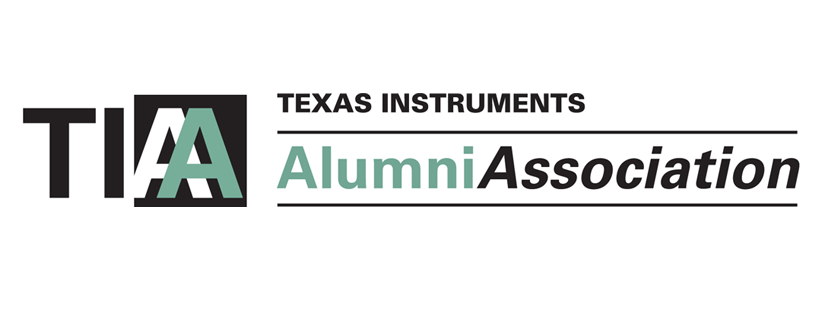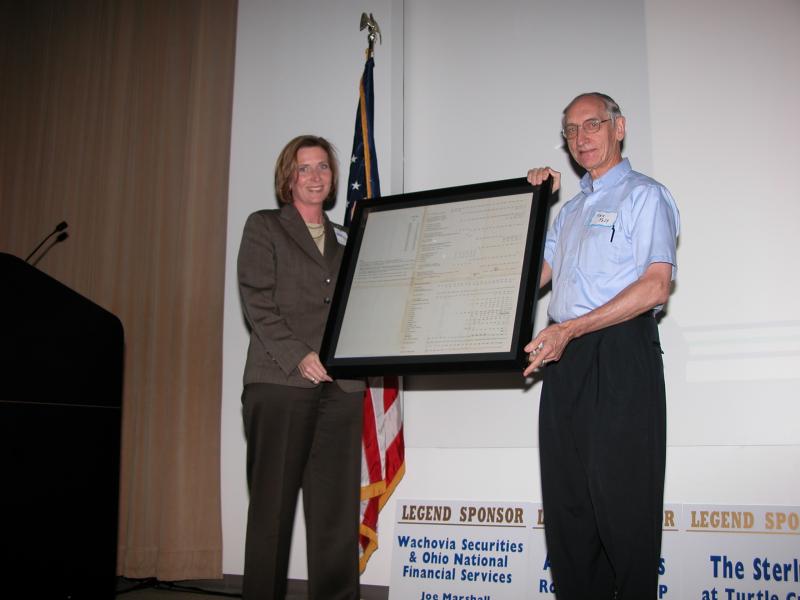TI Alumni Association members met May 16 at the Frontiers of Flight Museum in Dallas for the annual TIAA business meeting. They re-elected Lewis McMahan, president; Francisco Escobar, executive vice president; Janelle Richards, secretary; and Tom Boedecker, treasurer, by acclamation after Max Post read the nominating committee report.
Lewis presented an overview of TIAA, and Darla Whitaker, TI senior vice president and manager of Human Resources, provided a TI business update. Lewis discussed present and potential TIAA membership, Dallas-area activities and events and the organization’s strategic focus. He said TIAA would emphasize communications by increased use of the website and improvements in the newsletter
One priority is to involve more former TIers and retirees outside the Dallas area, while continuing to strengthen the Dallas-area programs. Plans are under way to encourage participation of recent retirees. Lewis summarized results of the TIAA survey of former TIers, which had more than 1,000 respondents. The survey confirmed the importance of communications and will be a valuable guide for future developments.
Darla presented slides from a recent analyst meeting that showed TI’s trend of record financial performance. Earnings per share increased by 33 percent over the past three years and dividends increased four times in the last four years. TI continues to gain market share in semiconductors. With the sale of the Sensors & Controls business, semiconductor revenues now make up 96 percent of TI’s total revenues. The remainder comes from the calculator business. TI is optimistic about future opportunities, particularly in the analog market, which represents a total available market of $37 billion. TI currently has about 13 percent of that market and will benefit from increasing its share. Wireless is the single largest product area for TI, producing more than $5 billion in revenues in 2006. Darla cited the high growth potential in emerging countries with large populations, including China, India and Brazil. She said these countries are great markets for cell phones. Many people can’t afford to buy a computer, but they can afford a cell phone. Medical applications are one of TI’s most exciting areas. Darla presented examples of how TI DSP technology is being used. She showed a dramatic video of experimental work being done to improve the sensitivity and flexibility of artificial limbs.
Darla was presented a framed photocopy of an old chart found in TI’s archives by the retiree team working on the project to transfer TI’s historic archives to SMU. The chart was in four sections, folded and taped together. It starts with the year 1930 and shows there were 120 employees in GSI as of year-end. As the company added its defense activities in WWII, the chart shows the buildup of people year by year in that operation (broken out for several product areas), and the same for semiconductors, beginning in 1952. Then later, M&C, consumer, industrial and other TI businesses emerged. As TI opened international operations, each subsidiary around the world is listed, showing the startup year and the number of people. Careful study of the chart shows the history of TI, the emergence of new businesses and new geographic areas. It is a vivid reminder of the importance of TI’s people in its growth. The original will be housed in SMU’s archives and available to future researchers.
Lewis explained that TIAA surveyed former TIers from around the world. We received 1,072 responses, which included over 800 written comments. Most surveys were submitted via the Internet, but we also had 85 people request written surveys be mailed to them, and 52 of those were completed.
He thanked each of you who took the time to give us excellent feedback on TIAA — the good, the bad and the ugly. At the May 9 TIAA Executive Committee meeting we reviewed the results and have asked the Activities, Communications and Administration (including Membership) Committee vice presidents to make recommendations for actions by TIAA.
Here are some high level results:
- Forty-two (42) percent of the responses came from the Dallas area
- 75 percent of these responders were TIAA members.
- Twenty-nine (29) percent of the respondents live in the United States but outside Texas and neighboring states. (A large number appear to be from Attleboro, based on written comments.)
- Fifty-two (52) percent were TIAA members, so we had a good mix of input from members and non-members.
- The most valuable TIAA offerings to members and non-members were updates on TI benefits, hearing about what TI is doing, and receiving the TIAA newsletter.
- Forty-five (45) percent said they would consider attending a “networking event for those who were at TI when I was.”
The top two reasons for not joining TIAA were living too far away from Dallas (23 percent) and being unaware of TIAA (18 percent). Members’ overall satisfaction with TIAA was 70 percent, with another 22 percent neutral. In summary, he observed that:
- Dallas is perceived to be the focus of TIAA;
- there appears to be a large number of non-members interested in TIAA but who need more information; and
- the primary interest areas are TI business and benefits updates, TIAA networking and the TIAA newsletter.
More information and actions will be communicated in the months to come. We look forward to sharing it and improving the organization. Thanks again to everyone for your candid responses. They are really appreciated.
Photos of the meeting may be viewed here: TIAA 2007 Annual Meeting photos.

